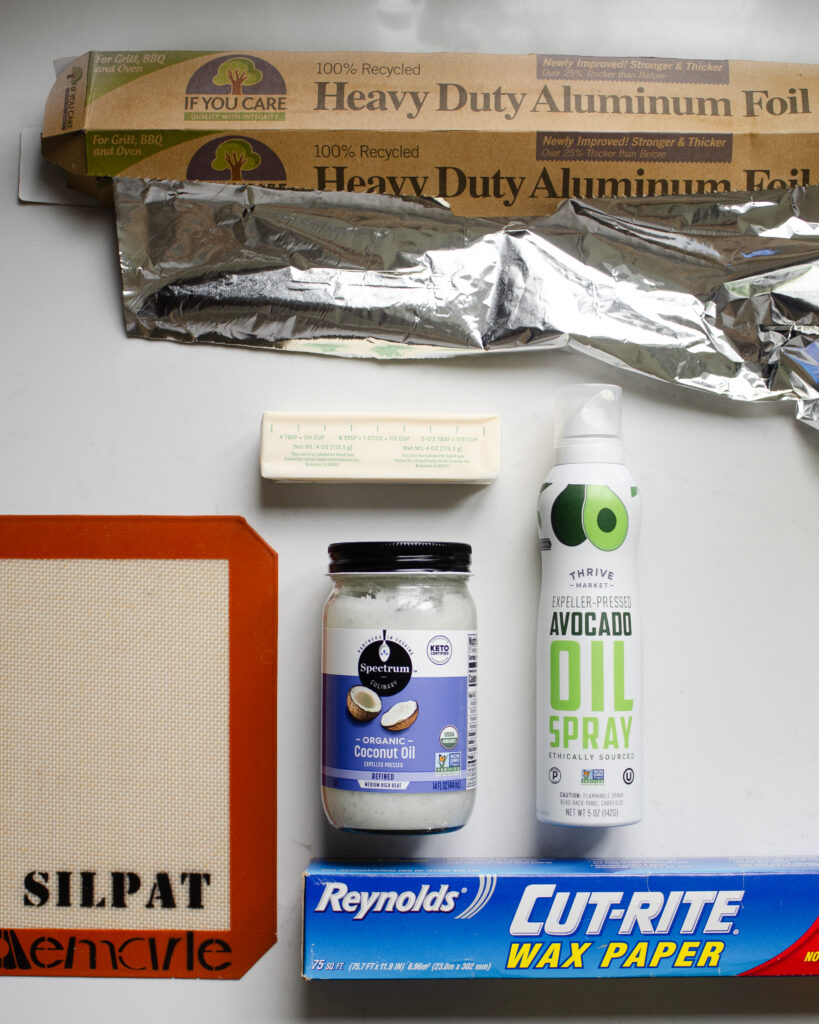In this post I will share my best parchment paper substitute for baking for different situations, and talk about the pros and cons of different substitutes!
So you don’t have any parchment paper on hand, but your recipe calls for it. What’s a home baker to do?
I’ve got you covered.
Today I’m going to share 5 parchment paper substitutes for baking, but I’ll also talk about 2 that you definitely want to avoid.
Several of these you can pick up at your local grocery store, and a couple or more specialty items.
Okay, let’s dive in and talk about the best substitutes for parchment paper!
Here’s the video in case you learn better that way. But I have it all written out below as well!
What is Parchment Paper?
First of all, let’s talk about what parchment paper is. Parchment paper is food-grade paper that’s coated with silicone. The silicone is what gives parchment paper its non-stick qualities. You can either purchase bleached or non-bleached parchment paper.
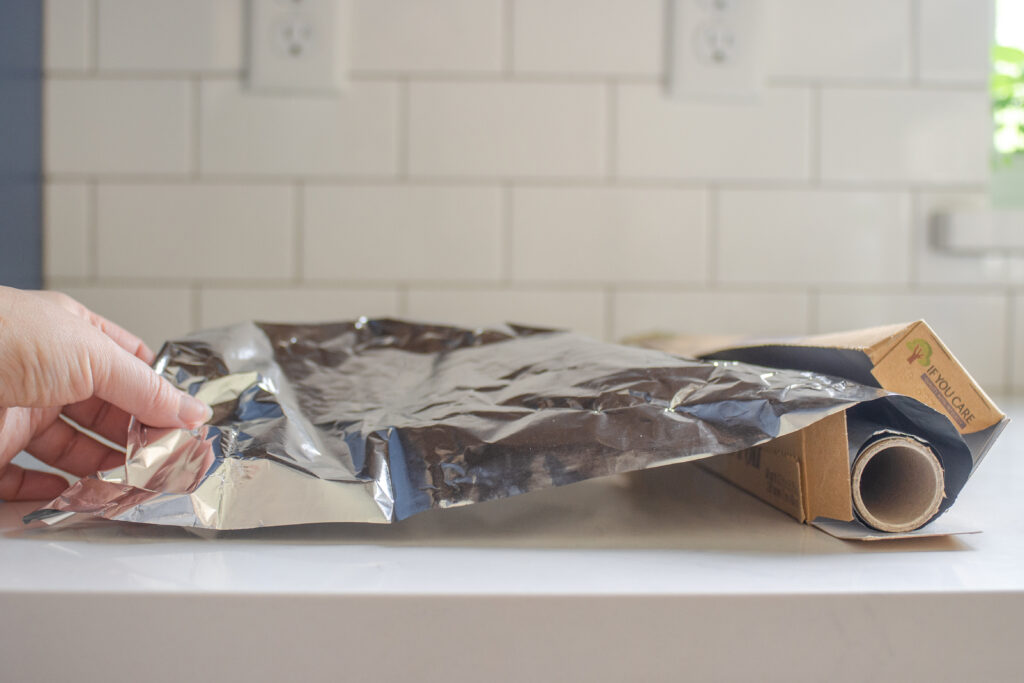
1 Aluminum Foil
Okay, here’s the first parchment paper replacement: aluminum foil!
This is great substitute to use when you want to lift whatever you’re baking out of the pan (make sure to purchase heavy foil if you’ll be lifting something heavy out of the pan). It’s great for lining a baking sheet when cooking bacon, toasting nuts, etc.
This is also the best substitute for cooking en papillote (in parchment paper).
Keep in mind that aluminum foil is NOT nonstick like parchment paper. As I mentioned above, parchment paper has a silicone coating, which gives it its nonstick properties. So make sure to oil or butter aluminum foil if you’re concerned about the food sticking to it.
The best way to apply the oil is with a pastry brush.
Also keep in mind that since aluminum foil is reflective, it can alter the cooking time. It also tends to make whatever you’re baking crisper or darker on the bottom. So keep that in mind if you’re using it in place of parchment paper.
This makes for really easy cleanup since it protects the pan from whatever you’re baking.
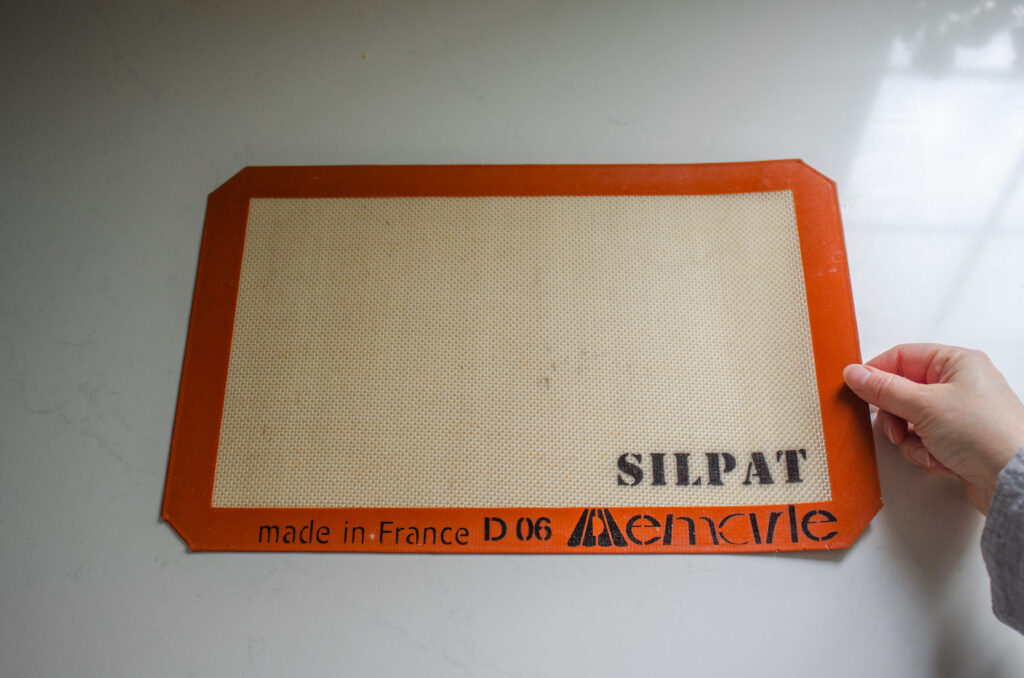
Note: Some links are affiliate. All opinions are my own. If you click a link and make a purchase, I will earn a small commission. This has zero impact on the price you pay, and it helps Buttered Side Up out!
2 Silpat mat:
An excellent substitute for parchment baking paper is a silicone baking mat, also known as a silpat mat.
These silicone mats are made from a fiberglass core and a food-grade silicone outer layer. If you treat them properly, they can last for up to 3000 baking cycles.
These are really non-stick, and they’re great for lining a cookie sheet for baking cookies, scones, etc.
However, they’re not meant to be used as a cutting surface, so you must remove whatever you baked to a separate surface if it needs to be sliced.
Also, you can’t cut it down to size to fit your pan. You can however purchase them in different sizes, including round ones for cake tins.
But they are pretty much infinitely reusable, so they’re useful tool to have on hand.
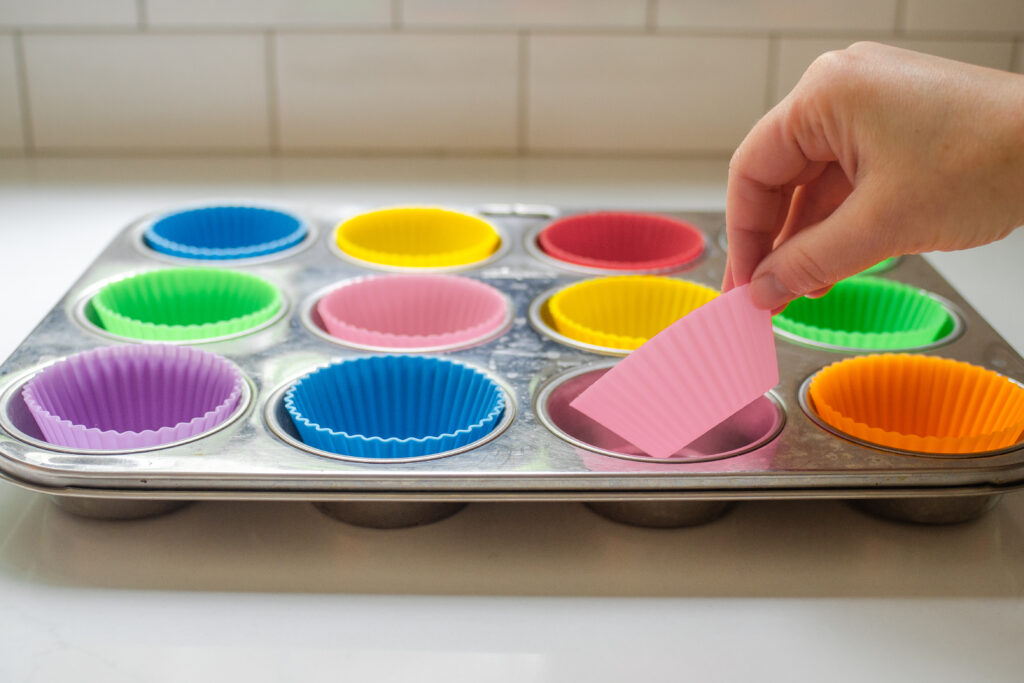
3 Silicone Baking Pans:
The next substitute for parchment paper is silicone pans.
You can actually purchase silicone muffin liners, muffin pans, cake pans, loaf pans, etc. For example, Silpat makes silicone muffin pans and cake molds that don’t require liners!
They have a non-stick surface, so you don’t need to line them with parchment like traditional baking pans.
Most silicone baking trays can withstand fairly high temperatures of 400 to 450 degrees Fahrenheit (204 – 232 Celsius).
The downside is silicone obviously isn’t as sturdy as glass or metal, so you have to be more careful when you’re transferring your baked goods to the oven.
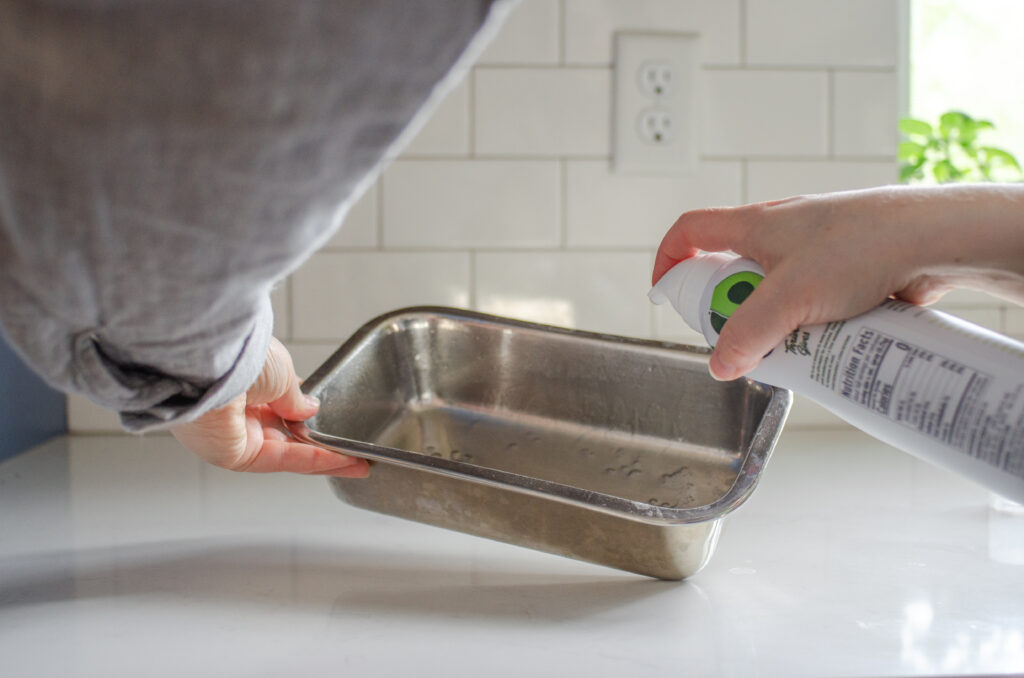
4 Cooking Spray
The fourth substitute for parchment paper is cooking spray.
There are many different cooking sprays on the market, and some of them actually contain flour to help with the non-stick properties.
I personally try to avoid the propellants and other additives contained in many of these cooking sprays.
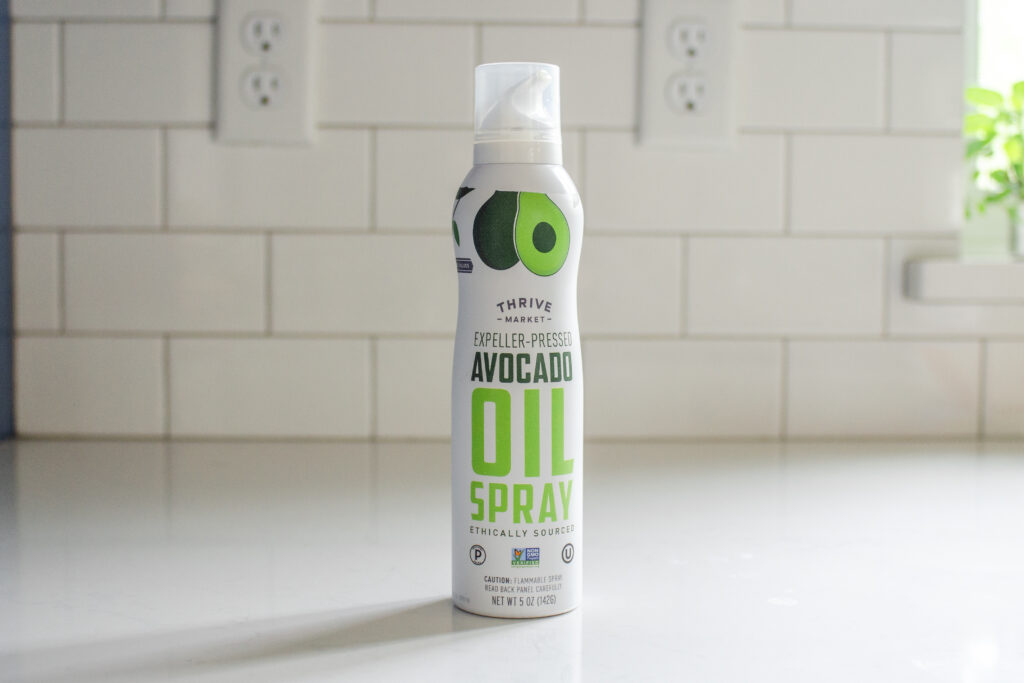
I like the Chosen Foods or Thrive market avocado oil sprays. Also, I try to avoid seed oils such as canola oil, corn oil, etc.
You could also just grease your pan manually with oil or butter.
These are great options if you need just a little extra non-stick boost, but if you need to ensure that your cake will absolutely not stick to the pan, it’s a good idea to use this substitute…
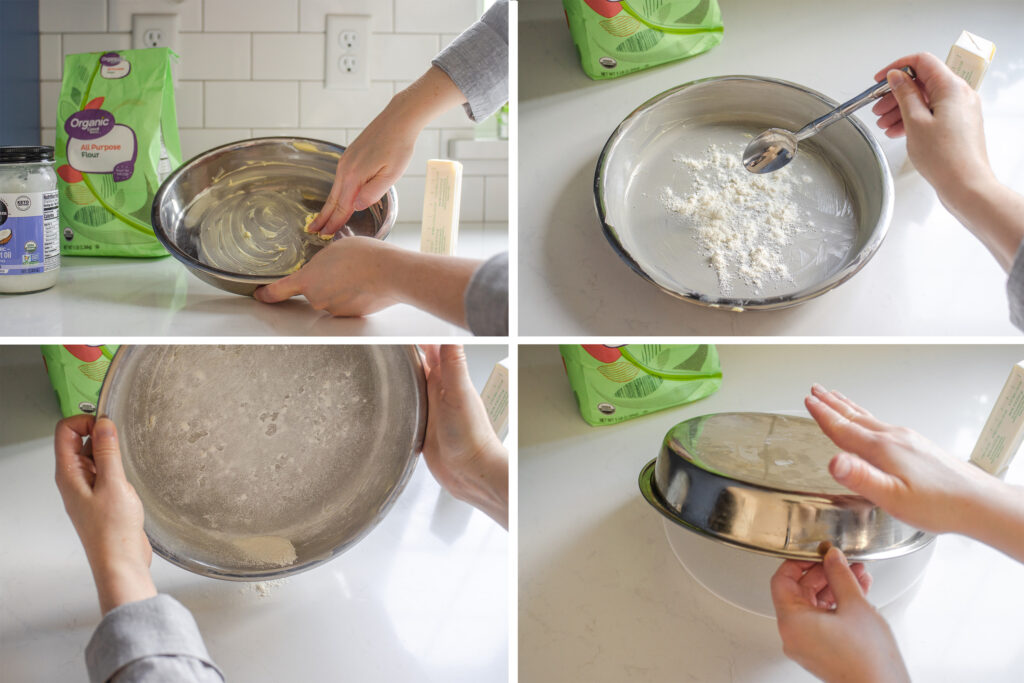
5 Butter and Flour
Which is grease plus flour. This method of greasing your pan involves first rubbing it all over, including the sides of the pan, with a solid fat such as salted or unsalted butter or coconut oil. I don’t recommend using a liquid fat like olive oil or avocado oil for this.
Then you sprinkle the greased baking pan with flour, and then turn the pan in every direction so the flour evenly coats the grease. Then you tap out any excess flour.
And there you have a pan that’s perfectly coated in a thin layer of butter and flour.
This method isn’t quite as fool proof as parchment paper, but if you are careful to cover every single surface of the pan, it comes close.
This is the best parchment paper substitute if you don’t want to buy any specialty equipment or tools.
The downside to this method is the outside of whatever you’re baking gets coated in flour, which may be a drawback for you aesthetically.
You also run the risk of burning the flour if you’re baking with a really hot oven.
6 Banana Leaves or Corn Husks
Two bonus parchment paper alternatives are banana leaves and corn husks. I have not personally tried these methods, so keep that in mind.
For corn husks, you’ll want to soak them in water for 30 minutes before using them. Then you can wrap them around fish or other food items to make an en papillote substitute. Then you can tie it up with baker’s twine.
For banana leaves, you can use them in a similar way to wrap food for baking.
Keep in mind that both banana leaves and corn husks won’t keep liquids or fats from leaking through, so make sure to put them in a baking dish before putting in the oven.
Bad Parchment Paper Substitutes (Avoid These!)
Okay, those are 5 substitutes for parchment paper for baking.
Let’s address a couple of methods that you should never use when baking.
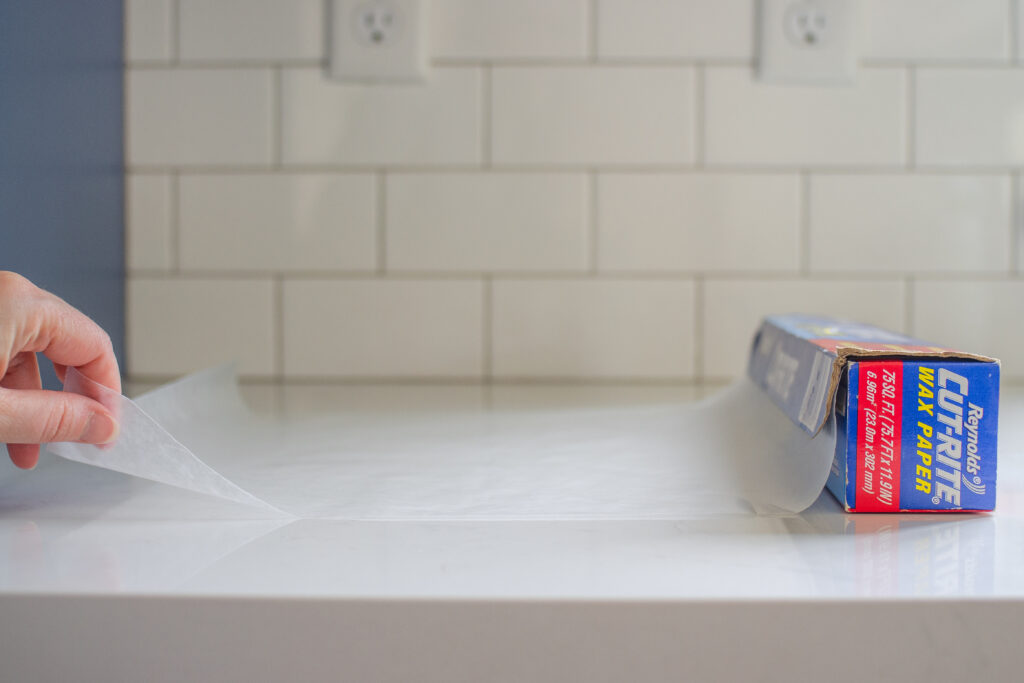
1 Wax Paper (Do Not Use)
The first thing you should never use for a parchment paper substitute when baking is waxed paper. Wax paper is NOT designed for baking with and is not heat resistant.
The main reason you don’t want to use this is the wax that coats wax paper can actually melt off of the paper when baking. Wax has a low melting point, and considering that the paper is often coated with paraffin wax, you really don’t want that leaching into your food.
So stick to using wax paper for storing food or as food wrappers, and keep it away from your oven.
Freezer paper is also not meant for baking, only for wrapping food for storage. It’s often coated in plastic, which shouldn’t go in the oven obviously.
2 Paper Bags (Do Not Use)
The other thing you should never use for baking is paper grocery bags. They are NOT a good substitute for parchment paper because they are not manufactured with high temperatures and cooking in mind. The inks used to print the paper bags could leach into your food as it cooks.
So if you want to store your cooled food in a really clean brown paper grocery bag, feel free! Just don’t use it for baking.
And I don’t think this needs to be said, but just in case, don’t use a paper towel for baking either! It would be okay to line a baking tray for keeping food warm in an oven set to very low temperatures, like 200 degrees F (93 C) or less. The main concern is they could catch on fire at high heat.
Regular paper (such at notebook paper or printer paper for writing) is also not meant to be food safe or go in the oven, so avoid that.
Honorable mention goes to plastic wrap: this is great for storing food when you don’t want it to stick to the storage container. But it should never ever go near an oven.
I hope this helped you to make a decision for which parchment paper alternative to use for all your baking needs!
If you have any questions, please leave me a comment down below!

